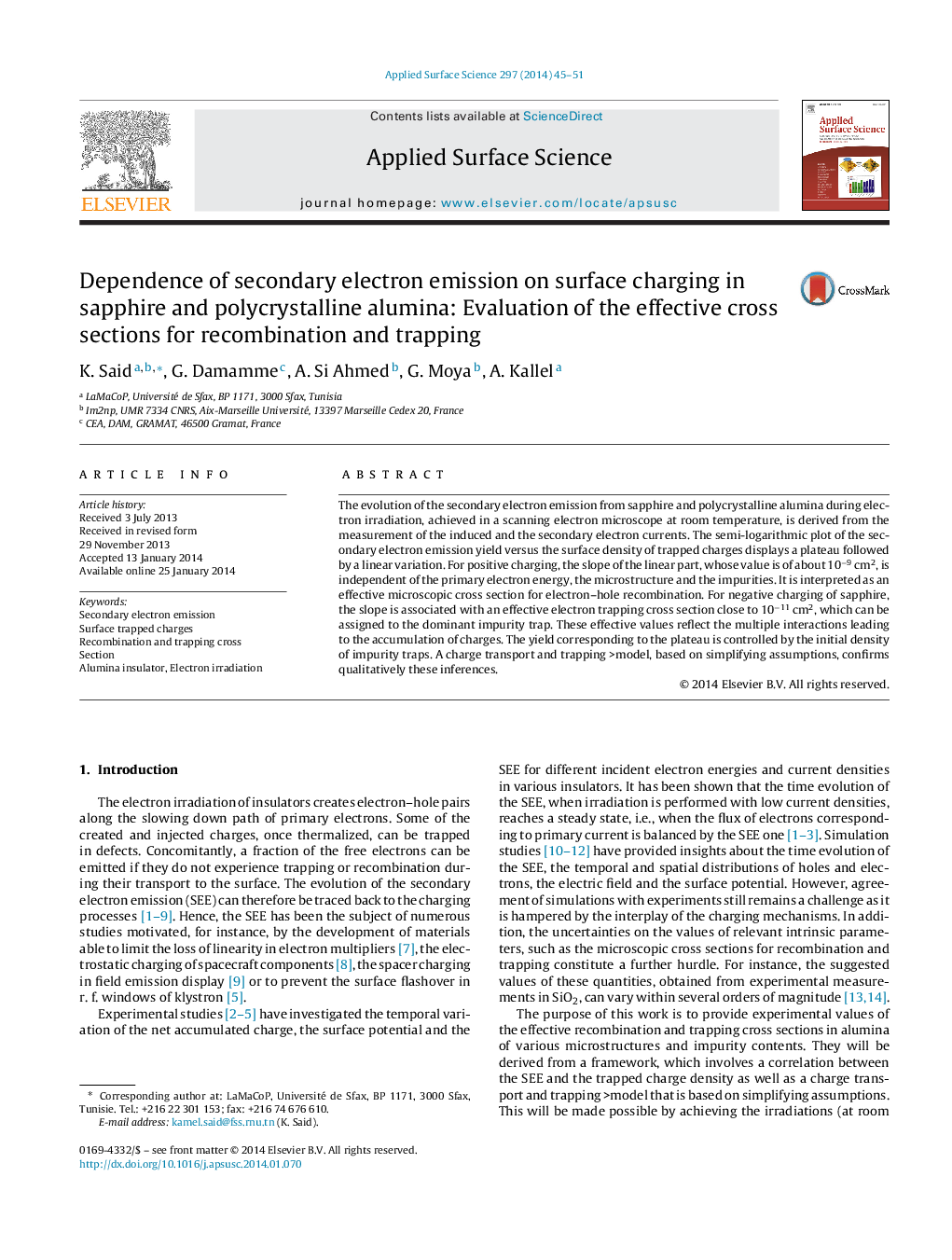| Article ID | Journal | Published Year | Pages | File Type |
|---|---|---|---|---|
| 5351229 | Applied Surface Science | 2014 | 7 Pages |
Abstract
The evolution of the secondary electron emission from sapphire and polycrystalline alumina during electron irradiation, achieved in a scanning electron microscope at room temperature, is derived from the measurement of the induced and the secondary electron currents. The semi-logarithmic plot of the secondary electron emission yield versus the surface density of trapped charges displays a plateau followed by a linear variation. For positive charging, the slope of the linear part, whose value is of about 10â9Â cm2, is independent of the primary electron energy, the microstructure and the impurities. It is interpreted as an effective microscopic cross section for electron-hole recombination. For negative charging of sapphire, the slope is associated with an effective electron trapping cross section close to 10â11Â cm2, which can be assigned to the dominant impurity trap. These effective values reflect the multiple interactions leading to the accumulation of charges. The yield corresponding to the plateau is controlled by the initial density of impurity traps. A charge transport and trapping >model, based on simplifying assumptions, confirms qualitatively these inferences.
Keywords
Related Topics
Physical Sciences and Engineering
Chemistry
Physical and Theoretical Chemistry
Authors
K. Said, G. Damamme, A. Si Ahmed, G. Moya, A. Kallel,
